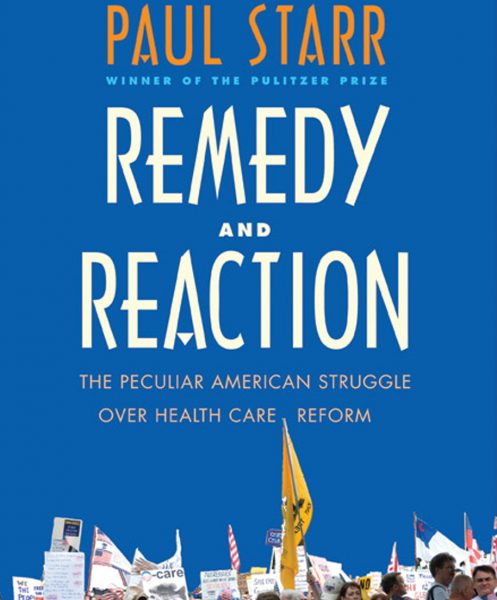Obamacare: The Media, Policy, and Impact
American politics is, by definition, divisive, but in the 2012 election perhaps no single word demonstrates this better than Obamacare. In Remedy and Reaction: The Peculiar American Struggle Over Health Care Reform, Paul Starr, a former senior advisor on health policy for the Clinton administration, examines the political and economic forces that have shaped American health care reform in the last 100 years, including what lead up to today’s decision by the Supreme Court to uphold the Affordable Care Act. With only slight revisions to the Medicad policy and the re-classification of the individual mandate as a tax, the case will most likely become one that is constantly referred to in history books beside Bush v. Gore, Brown v. Board of Education, and Roe v. Wade. Along with the case itself, the legacy of what Starr refers to as a peculiar struggle over reform that is purely American will also endure.
Amid all of the fear rhetoric, the uncertainty and the plain misinformation from all sides, Starr is able to produce an admittedly liberally biased (his treatment of the Clinton plan as an advisor rather than an outsider), yet clear outline of how in 2009 it became one of President Obama’s priorities to pass health care reform legislation. Starr outlines some of the major influences in the health care industry that led to the passing of the Affordable Care Act (ACA), including the rising cost of health care, the filibuster-proof Democratic Senate majority, and the history of President Clinton’s attempt to pass health care reform in 1994. Starr deftly covers many of the fears the American public expressed leading up to the passage and subsequent court ruling on the ACA. From fear of another Republican influx à la the 1996 mid-term elections to the death panel fear propagated by Sarah Palin, the most commanding part of Starr’s commentary may actually relate to media, rather than health care itself.
With the advent of the 24-hour news cycle and instantly-updating social media platforms information can be spread much faster and much wider than it could, even when Clinton held office in 1994. Twitter and political bloggers, like the live-streamed SCOTUS blog, were some of the first media outlets to report a decision as they were able to analyze faster than the judges were able to read. The news cycle allows for information to be disseminated quickly, though not necessarily accurately, and one statement can send an individual into damage-control mode for months. Today’s CNN headlines proclaiming that the mandate had been struck down are just one example of how in a fast-paced world the news can easily be misreported. Detailing Republican attempts to stop the bill from passing, Starr shows the power that a single phrase can have in guiding a person’s thoughts about an issue. The importance of clear communication is especially important as the debates are likely to begin again in the House to repeal the ACA.
The long-term consequences of the Supreme Court’s 5-4 decision can hardly be known; however, the one thing that can be said is that the debate has not ended just because the Supreme Court has ruled. From the halls of Congress to the bus caravans of the 2012 election, to the social media spaces of Twitter and Facebook, the decision will be talked about for days, weeks, months, and even years to come. The consequences for the election are also up in the air, as are future actions of Congress which has the say in how to implement the Affordable Care Act and how the Republicans will deal with fighting a bill that is similar to that passed by Mitt Romney in Massachusetts, according to Starr in his Yale Press Podcast interview. You can listen in on directly or on-the-go from our website or from iTunes.



























